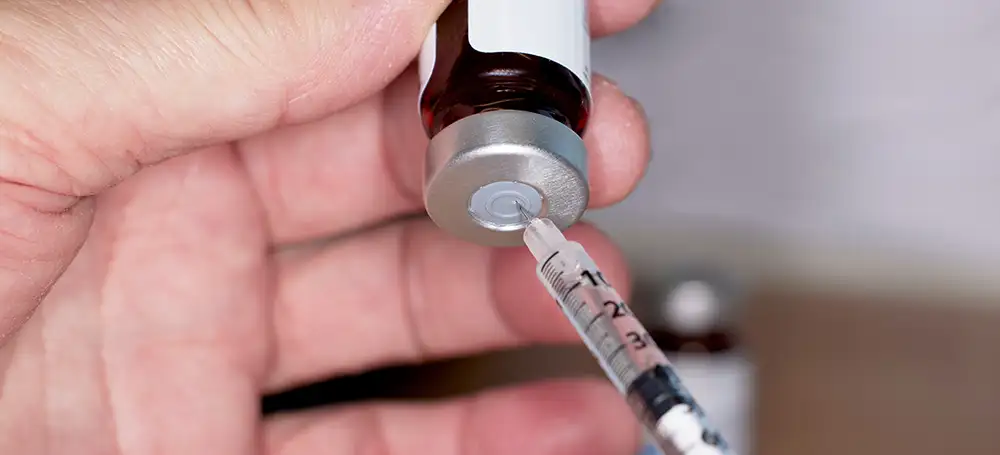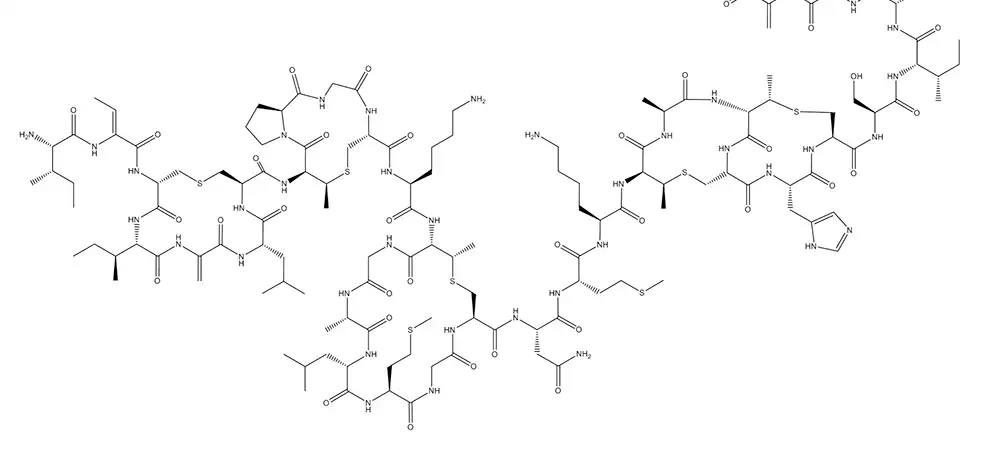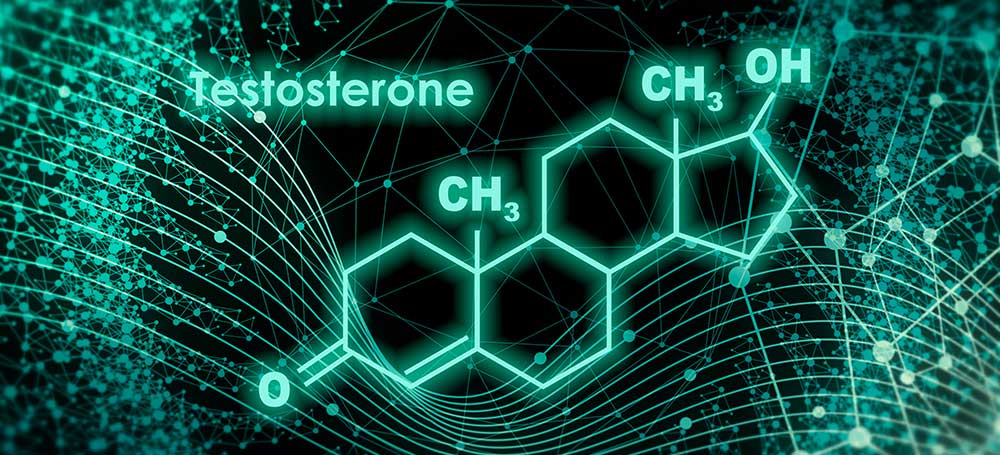It can be disconcerting to learn that you’re losing testosterone. It’s something that happens to all men with age — but the effects can be more significant in some men. Clarity regarding the science behind decreases in testosterone production can open doors to understanding what might be going on with your own body as well as to seeing whether there’s something you can do about the changes.
What Does Testosterone Do in the Male Body?
Testosterone is an androgenic hormone secreted by the testicles in response to signals from the pituitary gland and hypothalamus. It’s vital for the development of the sex organs both before birth and at puberty, and it’s necessary for the production of sperm.
Testosterone also plays a crucial role in the development of muscle mass and the maintenance of bone density. It helps your red blood cell count stay healthy, and it helps create a sense of overall well-being. It also helps fuel secondary sexual characteristics, such as body and facial hair and the deepening of the voice that occurs after puberty.
What Is Low Testosterone?
When a man has low testosterone, his testicles are producing inadequate amounts of testosterone to keep his body healthy. Normal levels of testosterone, according to the American Urology Association, are anywhere between 300 and 1,000 nanogram per deciliter (ng/dL). Anything below 300 ng/dL is considered low testosterone. Low testosterone levels can cause a number of serious effects, including fragile bones, weight gain, sexual dysfunction, and mental health symptoms.
What Causes Low Testosterone?
While some males have congenital issues that result in low testosterone levels, the primary driver behind testosterone deficiency is changes that occur with age, with testosterone production starting to decline naturally in most men as they hit their 30s. In general, men can expect to see their testosterone production decrease about 1% per year beginning in their 40s. Low testosterone can be caused by problems with either the testicles or with the hypothalamus and pituitary gland.
Testicular Disorders
Problems with the testicles can cause them to produce abnormally low levels of testosterone. Normally, when the body is in need of more testosterone, the pituitary gland produces increased levels of follicle-stimulating hormone (FSH) and luteinizing hormone (LH), which signal the testicles to ramp up testosterone production. Testicles that have been damaged in some way, however, may not be able to receive the signals and respond to them.
Various congenital conditions can result in these types of testicular problems, including undescended testicles, Noonan syndrome, Klinefelter’s syndrome, specific types of muscular dystrophy, and underdevelopment of the Leydig cells, which are the testicular cells that actually produce testosterone. All these conditions are quite rare.
In addition, the testicles can be damaged through injury, cancer, chemotherapy, and radiation therapy. Specific types of inflammation can also cause testicular damage, particularly that caused by sexually transmitted diseases or by mumps. In addition, anabolic steroid use can cause permanent damage to the testicles.
Disorders of the Pituitary and Hypothalamus
A handful of congenital disorders of the pituitary gland and the hypothalamus can also result in testosterone deficiency. This occurs when the brain is no longer able to produce FSH and LH normally. These disorders include the rare conditions known as Kallmann syndrome and Prader-Willi syndrome.
More commonly, the hypothalamus and pituitary gland fail to produce FSH and LH in adequate amounts as a side effect of other diseases and conditions, including cirrhosis of the liver, HIV or AIDS, Cushing’s syndrome, or kidney failure. Injury to the brain can also cause sufficient damage, as can alcohol use disorder and obstructive sleep apnea. Infection or inflammation of the pituitary gland may also result in problems with production of FSH and LH, and certain medications, including estrogens, opioids, and psychoactive drugs, may also do so.
Obesity and Type 2 diabetes are among the most common factors underlying the pituitary and hypothalamus dysfunction that results in low testosterone production. Men who are overweight are five times as likely to experience low testosterone as those of normal weight, and men with Type 2 diabetes are about twice as likely.
How Common is Low Testosterone? (And Who Does It Affect?)
The percentage of men affected by low testosterone levels rises with age. While only about 2% of young men experience testosterone deficiency, by the time men are in their 50s, that number is closer to 10%, and some estimates say that as many as 30% of older men may experience low testosterone.
Testosterone deficiency is more likely to affect older men. It’s also more prevalent in men who have Type 2 diabetes, obesity, or sleep apnea. In addition, men with chronic medical conditions, such as cirrhosis of the liver, kidney dysfunction, or HIV/AIDS are more likely to see their testosterone levels drop.
Why Have Testosterone Levels Been Declining in Recent Years?
While the average male population doesn’t have testosterone deficiency, testosterone levels have trended downward nationally for several decades, even when age is removed as a factor. This overall decline may be related to a national decline in men’s health across the United States. Among the factors that researchers believe are affecting this decline are:
- Decrease in physical activity. Anaerobic exercise such as weight-lifting has been shown to boost testosterone numbers in the short-term — so it makes sense that failure to participate in that kind of physical activity could lower them. And no, getting your steps in isn’t enough, as cardio doesn’t provide the same increase in testosterone.
- Increased alcohol use. Excessive use of alcohol affects testosterone negatively, as does chronic drinking, which can increase estrogen levels. The mere act of metabolizing ethanol (the key ingredient producing the endorphins that deliver the great feeling alcohol can provide) hinders the production of testosterone, as do some of the endorphins themselves.
- Exposure to toxins. In modern life, you’re exposed to many endocrine-disrupting chemicals on a regular basis, many of them delivered via plastic. Research on the relationship between ingesting these chemicals and testosterone is in progress now — but those friends who tell you to ditch your plastic water bottle could be on to something. Those bottles typically contain Bisphenol-A — and studies show that 89% of men seeking treatment regarding their fertility levels show measurable signs of BPA in their bodies.
- Certain types of diets — notably low-fat diets — have been linked to slight drops in testosterone levels. In addition, specific foods can prompt a drop in testosterone, including some nuts, spearmint, flaxseed, soy, some fish, and some mushrooms. Meat containing added hormones can also be detrimental to testosterone levels.
- Lack of sleep. Because testosterone levels are highest in the morning, lack of adequate sleep can have a negative effect. Disruption of normal sleep cycles, whether through obstructive sleep apnea or just burning the candle at both ends, can cause significant drops in testosterone.
- Increased stress. As stress increases, your levels of cortisol rise throughout your body. This inhibits your endocrine system, keeping other hormones, including testosterone, from normal production levels.
- Excess weight. Elevated weight and BMI numbers affect your body and endocrine system in many ways — including disrupting the production and distribution of testosterone.
Looking over this list, you may feel as if it sounds like modern life for many men. Perhaps it’s not surprising, then, that testosterone levels are decreasing across the board.

The Symptoms of Low Testosterone
If you associate signs of sexual dysfunction with low testosterone levels, you’re on the right track. But testosterone deficiency manifests in many ways, some of which aren’t obvious. Symptoms of low testosterone include:
- Erectile dysfunction
- Low sperm count and male infertility
- Problems with memory and ability to concentrate
- Enlarged male breasts
- Decreased energy and stamina
- Reduction of bone mass and bone density, sometimes leading to fractures
- Fatigue
- Reduced semen production
- Mood swings and irritability
- Reduced libido or sex drive
- Loss of pubic hair
- Depression
- Increased body fat
- Decreased muscle mass
- Difficulty sleeping
Not all men with testosterone deficiency experience all these symptoms. However, a cluster of the above symptoms with no obvious cause is a good sign that it’s time to get testosterone levels tested.
How Is Low Testosterone Diagnosed?
Low testosterone levels are confirmed and diagnosed via a series of simple blood tests. Your doctor will test for total testosterone levels to determine if levels are low. They’re also likely to test for LH and prolactin levels to determine if the issues rest with your pituitary gland.
In addition, your doctor will perform a full physical exam. They’ll go through your medical history, including your current medications and your history of smoking. They may also ask for a bone density test.
Can Testosterone Deficiency Be Treated?
The good news is that researchers have indeed found multiple avenues for treating testosterone deficiency. Testosterone replacement therapy has been the standard of treatment for many years now, with several proven methods of delivery to help boost testosterone levels and ease the symptoms that accompany low testosterone. These methods include:
- Testosterone injections. Injections can be administered at a doctor’s office, or you can take care of them yourself at home. Each injection lasts for about 10 weeks.
- Testosterone pellets. These pellets, which are inserted beneath the skin of your upper thigh at your medical practitioner’s office, deliver a consistent dosage of testosterone for anywhere from 3 to 6 months, making them one of the easiest “set-it-and-forget-it” modes of delivery.
- Testosterone gel. This daily method of testosterone treatment is something you can handle at home, applying the gel to the skin of your upper arm. While gel is one of the most common forms of treatment, it’s important that no one else handles it, so it may not be the best choice for men who have kids at home.
- Testosterone patches. Similar to testosterone gel, this means of delivery, which is similar to a nicotine patch, sends testosterone into your body through your skin. The patch form, which must be applied daily, makes this method less potentially messy than gel.
Some men with low testosterone levels may not be suitable candidates for treatment. Anyone with prostate cancer or breast cancer shouldn’t undergo testosterone replacement therapy. In addition, if you have uncontrolled obstructive sleep apnea or heart failure, you may not be a good candidate for the treatment.
Most men start to see their symptoms fade within a few weeks, with full relief from symptoms by about the 6-month mark.
When to See a Doctor About Suspected Low Testosterone
If you experience a decrease in sex drive, erectile dysfunction, loss of muscle mass, or other symptoms of testosterone deficiency, it’s a good idea to see a doctor for testing and examination. It’s important to remember, though, that it’s very possible to have low testosterone levels without any obvious symptoms.











